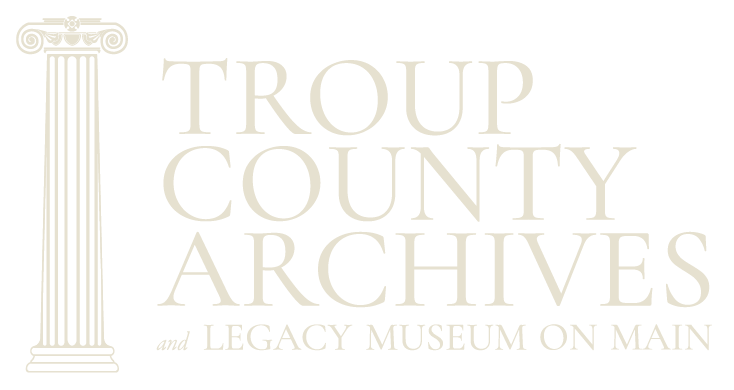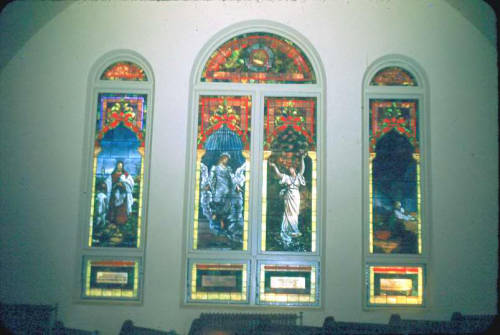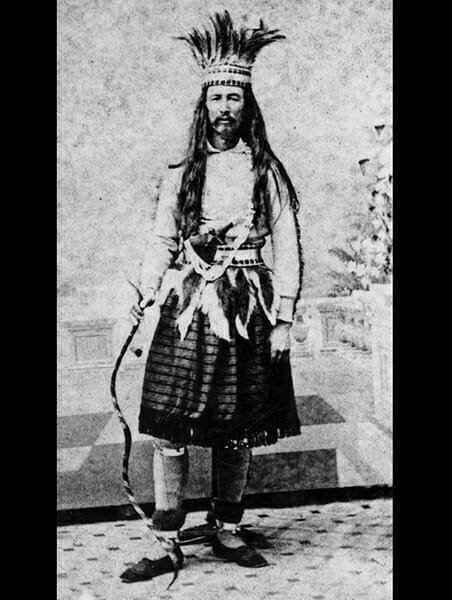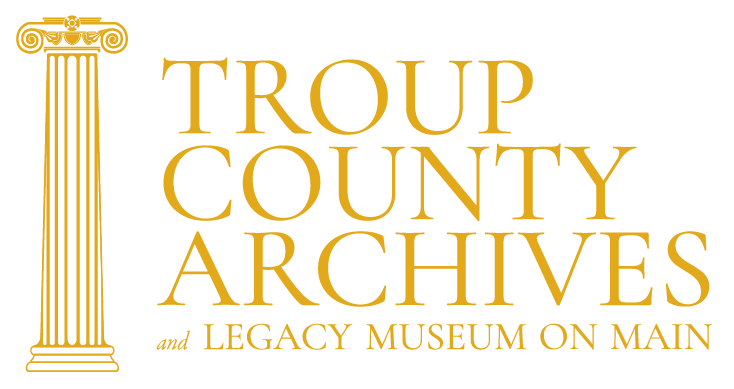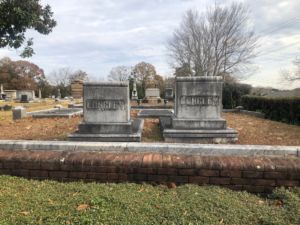
Photo of the Longley grave, 2021 by Lewis O. Powell, IV.
If, like me, you’re a resident of LaGrange, you will regularly find yourself driving down Morgan Street where it becomes New Franklin Road and passing the glorious riot of stone monuments that makes up Hill View Cemetery. As I pass it on a nearly daily basis, I find myself thinking about the many men and women whose monuments prominently stand next to the road. This guide is created for you, dear drivers, to add a dose of local history to your daily commute.
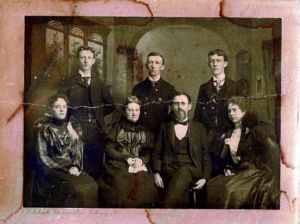
Portrait of the Longley family, undated, from the Julian Schaub Studio, Front Row L-R: Lillyan (Abraham) Longley, Mary Elizabeth (Poer) Longley, Francis Marion Longley, Maymie (Stevens) Longley; Back Row L-R: Francis Park Longley, Eldon Scott Longley & Fuller McLaren Longley.
Hill View Cemetery (the name was two words from its founding) was founded as a municipal cemetery in 1830. This cemetery is bounded by Morgan Street/New Franklin Road on the west and Bacon Street on the north, which separates it from Shadowlawn and the Hill View Annex Cemeteries which date to much later. This space has been under the administration of the City of LaGrange throughout much of its existence.
Driving north on Morgan Street, you will pass Corporate Plaza Drive, an office building, and then Dr. Harris’ Veterinary Clinic on your right. The southwest corner of the cemetery butts up against the veterinary office parking lot. Lot No. 1 is located at that corner with two prominent marble markers facing towards the street bearing the surname Longley. These are the grave markers for Judge Francis Marion Longley and his wife, Mary Eliza Poer.
In the late 19th and early 20th centuries, Judge Longley was about as prominent a citizen as one could be. He was born in Tennessee in 1839 and served that state in the Civil
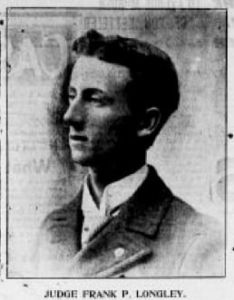
Frank P. Longley from page 4 of the LaGrange Reporter, 6 July 1900.
War. Following the war, he moved to West Point where he briefly edited the West Point Observer newspaper and practiced law before he moved to LaGrange. In 1874, he was elected to the City Council and he was elected mayor in 1876. After his term as
mayor, he again served on the City Council. Again, he was elected mayor in 1880, but he resigned after five months. Over the next few years, he served several more stints on the City Council. He was part of the group of investors who created the short-lived LaGrange Street Railway Company in 1891. Between 1881 and 1882, he was judge of the
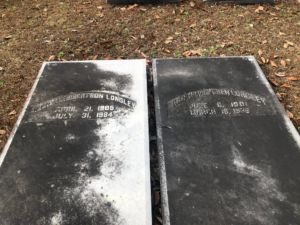
Mary Robertson Longley and Julian McLauren Longley graves. Photo by: Lewis O. Powell, IV.
Troup County Superior Court and judge of the County Court from 1901-1904. He also served two stints in the state legislature and was on the Troup County Commission. He was also among the initial investors in the
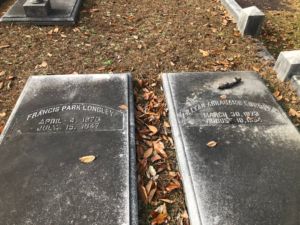
Francis Park Longley and Lillyan Abrahams Longley graves. Photo by: Lewis O. Powell, IV.
LaGrange National Bank, the LaGrange Mills, and Unity Mill. The judge died at his Broad Street home in 1923.
Judge Longley is joined in this plot by his wife, his son, Frank, and Frank’s son, Julian and their wives. Besides the graves of Judge Longley and his wife, the other graves are marked with marble slabs that are barely visible from the street. Francis Park “Frank” Longley (1870-1947) also served as a judge in the LaGrange City Court and he also served in the state legislature. Frank’s wife, Lillian Lorraine Abraham (1873-1954) lies just a few yards from the prominent monument to her father, Anderson D. Abraham. Julian McLauren Longley (1901-1979), Frank’s son lies with his wife, Mary Brown Robertson (1905-1984).
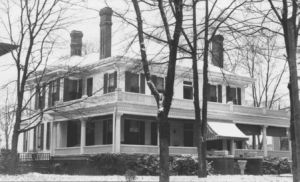
The Longley House at 405 Broad Street
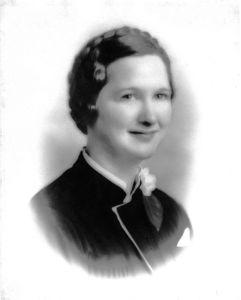
Mrs. Julian Longley (Mary Brown Robertson), 1937, photographed by Snelson Davis.
Judge Longley’s home at 405 Broad Street was purchased by First Methodist Church in 1955 and torn down in 1959. The first story of the house was moved to Winzor Avenue and bricked over for a residence. The property is now occupied by the church’s Fellowship Hall. – Lewis O. Powell, IV.
